
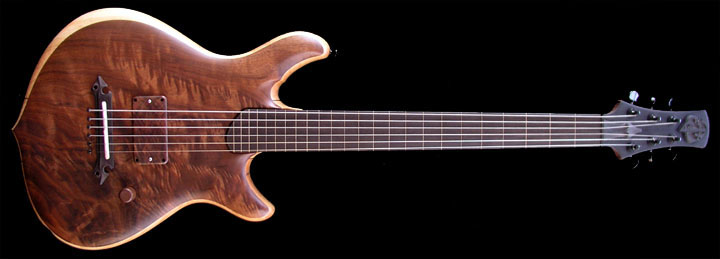
Kronos (frequently also spelled "Cronus") was the leader of the Titans and father of Zeus, Hades, and Poseidon. The origin of the name is unclear and may well be associated with the ancient Indian demon Kroni. All too often, Kronos is confused with Chronos, the personification of time.
According to some historic authors, Kronos eventually became ruler of the Elysian Fields - the final resting place of the souls of the heroic and virtuous. Writes Pindar:
And those that have three times kept to their oaths,
Keeping their souls clean and pure,
Never letting their hearts be defiled by the taint
Of evil and injustice,
And barbaric venality,
They are led by Zeus to the end:
To the palace of Kronos
~ ~ ~
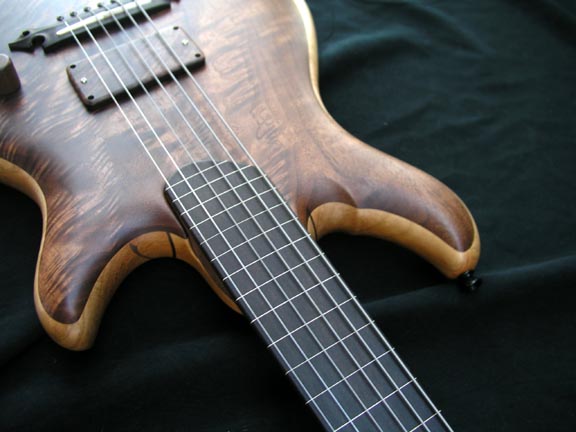
This guitar is the next distillation of my Kronos fretless concept which began with the first Kronos built almost exactly a year ago. There are a couple changes made and some excellent new features added to this newest member of the Kronos Society that I'll point out in the text below.
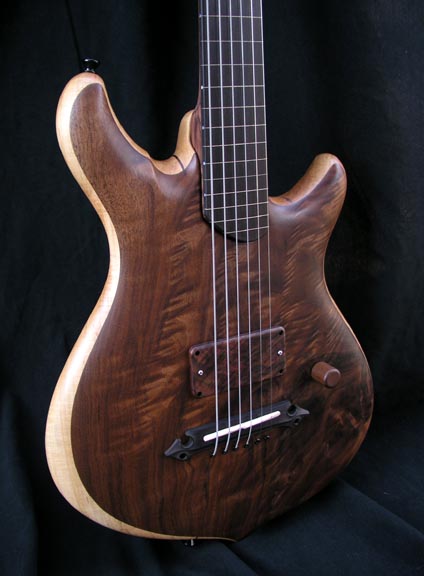
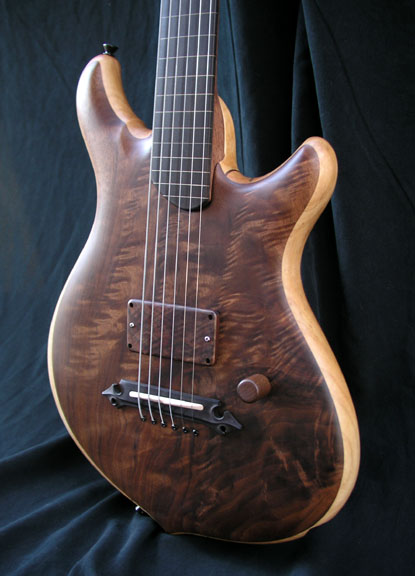
The lovely figured walnut top in the photos above is from the exact same local, air-dried stock from which came the original Kronos, however, the top of this newest instrument is one single piece. For the back, I chose to enhance the joinery of the soft maple with walnut veneer.
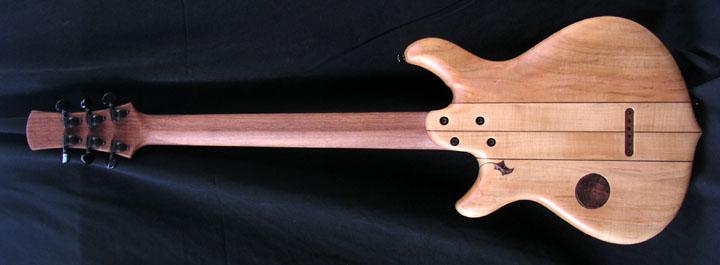
The neck on this guitar is Honduran rosewood, a very hard, dense wood that rings like glass when tapped. The moderate V neck profile that I frequently carve is obvious here. Note the stacked Mother of Pearl sidemarkers at the octave position.
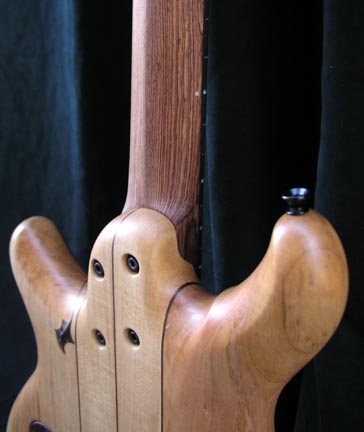
For fretless guitars, I prefer a bolt-on neck joint, mostly because if any maintenance has to be done to the fretless fingerboard, the neck can be easily removed. On this instrument, I'm using hex screws (instead of wood screws) and threaded T-nuts that I've permanently installed into the hard Honduran rosewood neck, before the fingerboard was attached. This allows for a very strong neck joint which is virtually foolproof to disassemble and put back together without stripping threads in the neck wood.
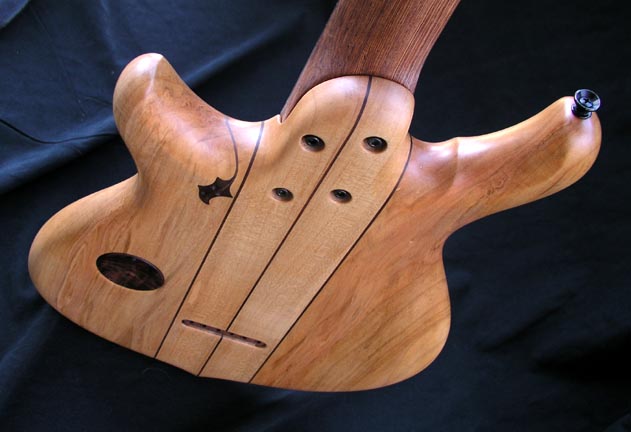
You may have noticed the carved leaf embellishment I added for fun. It breaks up the monotony a bit and compliments the curves of the guitar, otherwise contrasted by the straight veneer lines. Think of it as a graphic counterpart to the carved flourish on the other horn, as well.
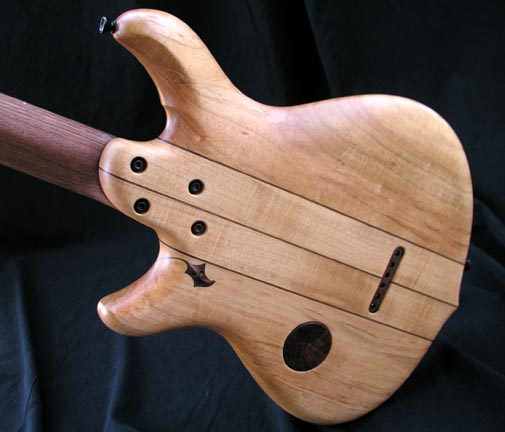
Because the bridge is wooden, I typically incorporate a brass ground plate to hold the ends of the strings that pass all the way through the body. The brass plate is covered permanently with a walnut inlay, but you can see the plate in the following photo. The plate is soldered with a ground wire that is in turn soldered to the cover of the volume pot. Also new to this model is the small control port and cover for easier access to the electronics.
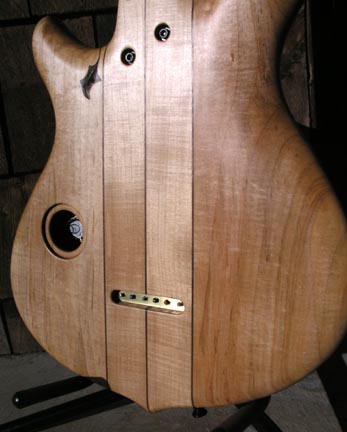
The bridge is sculpted ebony with a maple saddle. Black metal ferrules on the front of the guitar keep the strings from wearing the walnut top.
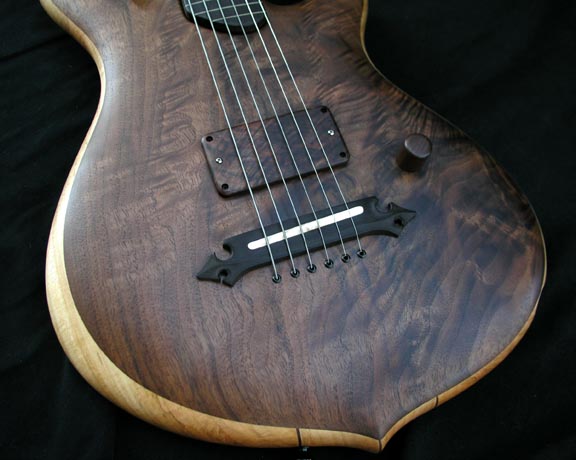
Another difference between this new Kronos and the original is the pickup placement. On the original, I positioned the single covered humbucker forward, in a more traditional neck position. For this new version, I've moved the pickup back toward the bridge to allow for the possibilities of a more treble sound. While I love a neck position pickup, particularly for jazz, this bridge position is a little more versatile. I based placement on the premise that highs are easier to remove than add.
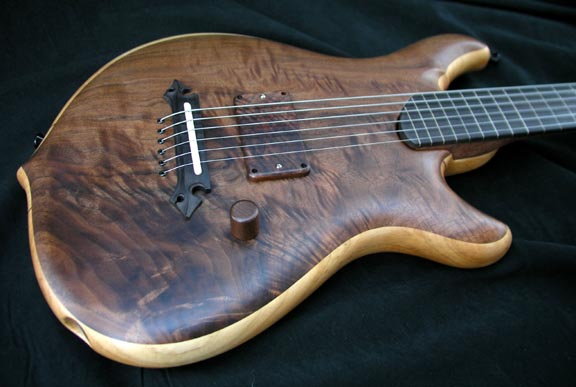
As is a common practice for me, I incorporated minimal controls - in this case, a single volume pot. For tone control, I usually rely on a wah-wah pedal or EQ.
Previously, I've used a Strat-style jackplate on a number of my guitars, including the original Kronos, but I'm incorporating an aluminum socket jack mount more and more. It makes for a good-looking, solid jack.
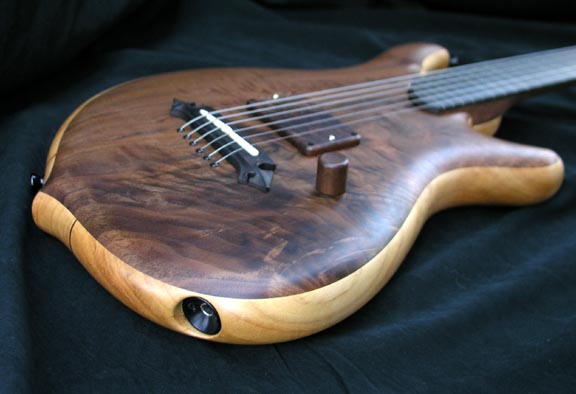
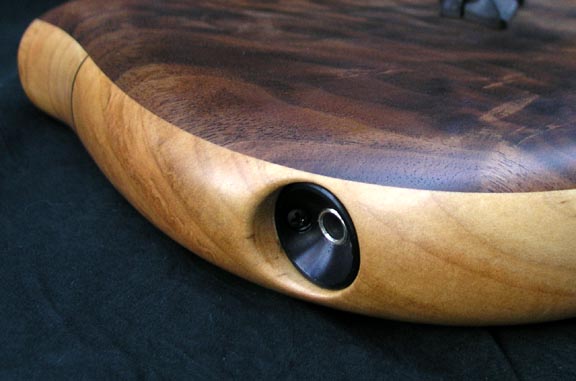
A quick word about the finish on this Kronos; I'm a big Tru-oil user, but for this guitar (and more to come), I'm using Danish oil, which is a penetrating oil. It doesn't build a coating like Tru-oil does, but instead, penetrates the wood, then dries there to harden and protect the wood. You're seeing a sheen here, because I sand the snot out of my guitars. The last grit I believe I used on this instrument was 1200 grit, sanding wet using Danish oil as my lubricant. It's truly smooth.
The ebony fretboard is inlaid with contrasting maple fretlines. The original Kronos used a 25" scale length, but this new instrument uses a 660 mm classical scale, or approximately 26". This allows for more string tension, which, I feel, greatly enhances the tone. Presently, I've got the guitar tuned down a full step to DGCFAD.
I play and recommend D'Addario half-round strings for fretless guitar. That's not to say that round-wounds aren't perfectly acceptable. I just prefer the half-rounds, which are quite a bit brighter than flat-wounds. I'm using a standard set, gauged 013-056, but I usually replace the first and second strings with a .015 and .019 string. The heavier gauge really helps thicken the sound of the higher strings on fretless guitar. Since no bending is necessary on fretless guitar, the heavier gauges improve tone at no cost to playability.
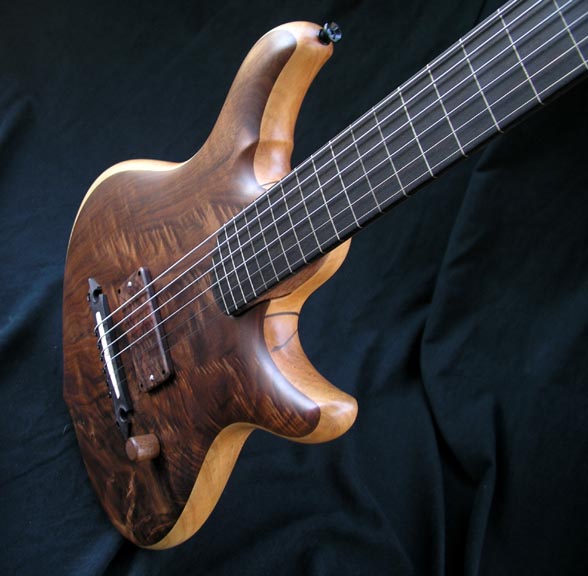
Rather than a simple inlaid logo, I wanted to raise the bar with a fully carved logo. This ebony headstock badge sits proud of the faceplate by about 3/16". It's inlaid into the faceplate, then the edges are cleaned up by hand.
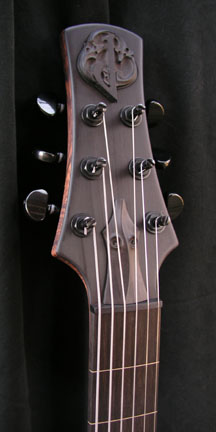
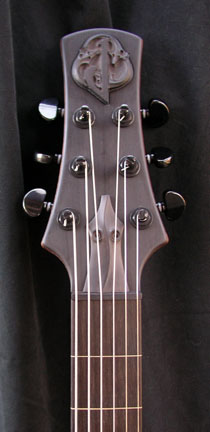
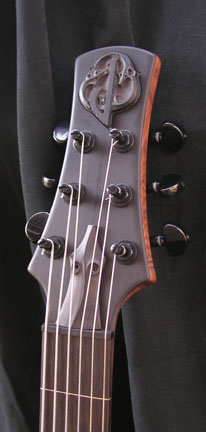
I carve the logo by hand, as well as the inlay cavity. I'm not against computer controlled routers. They have their place in the universe just like a music sequencer has its place. I just see the execution of my carvings in much the same light any musician sees his or her live performance, as opposed to programming the sequencer to let it do the playing. Years of practice has given me a steady hand and a lack of being intimidated. I'll stop controlling my own tools by hand when Pat Metheny walks on stage and pushes one button to trigger the sequencer to play his music for him. Where's the fun in that?
The nut is ebony, btw. I like an ebony nut on a fretless instrument, because it means that the tone of the open strings more closely matches that of the fingered strings.
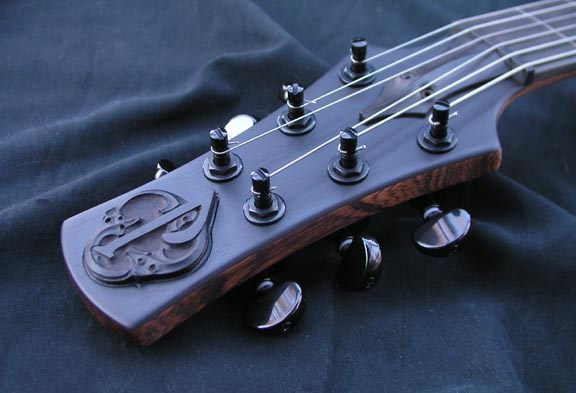
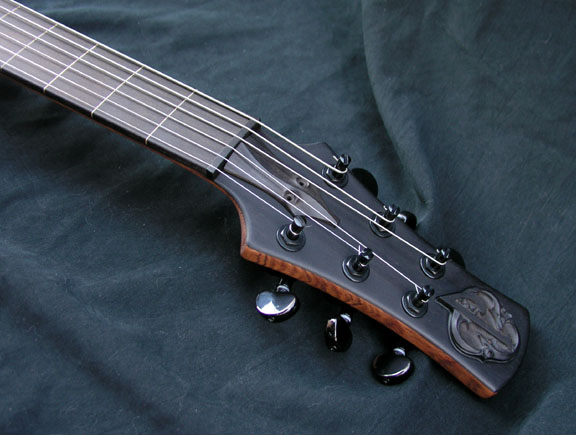
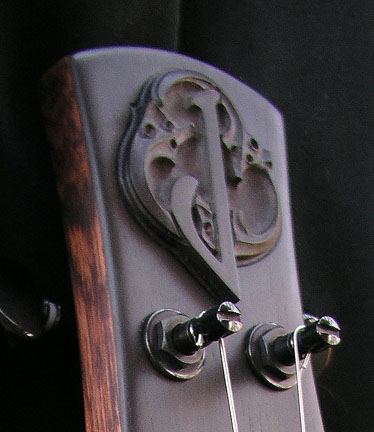
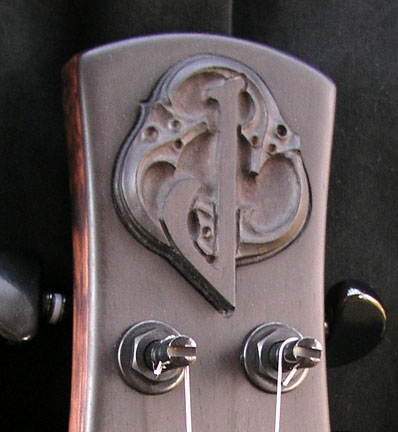
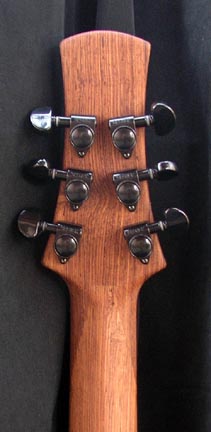
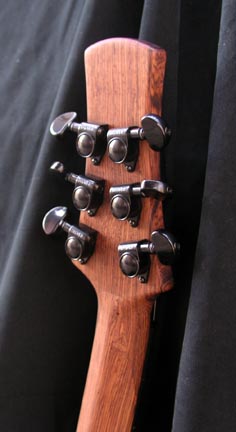
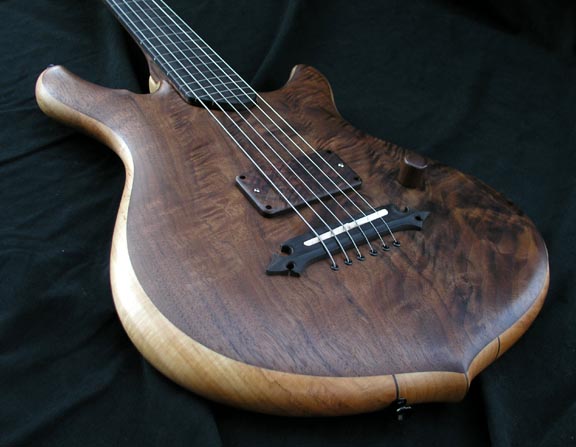
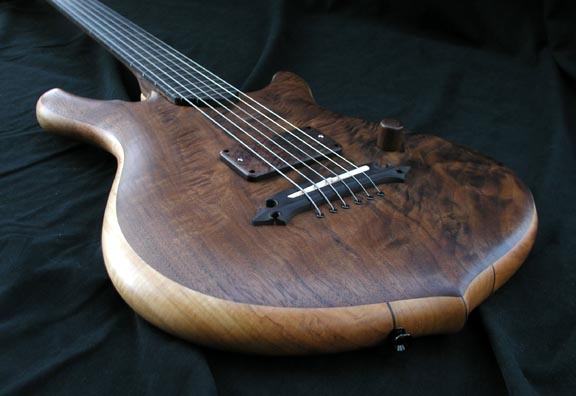
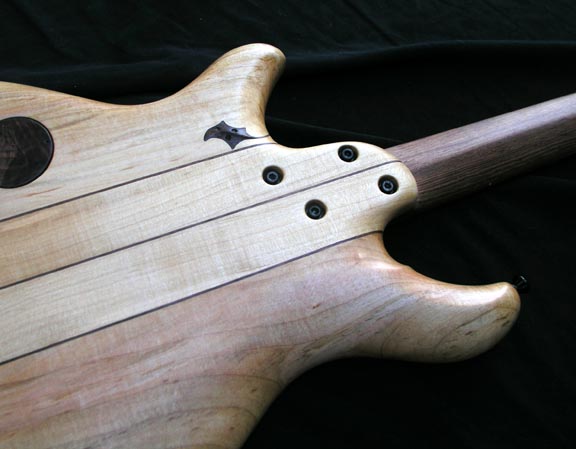
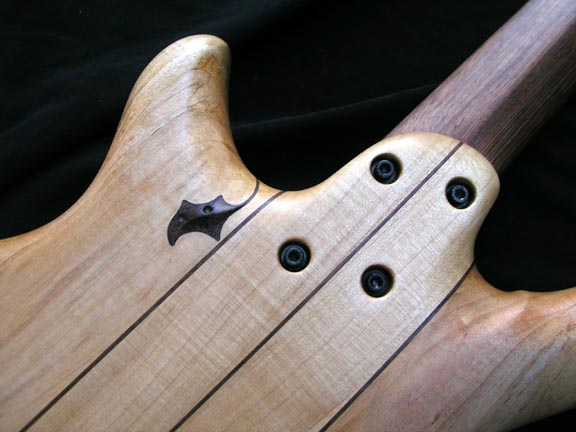
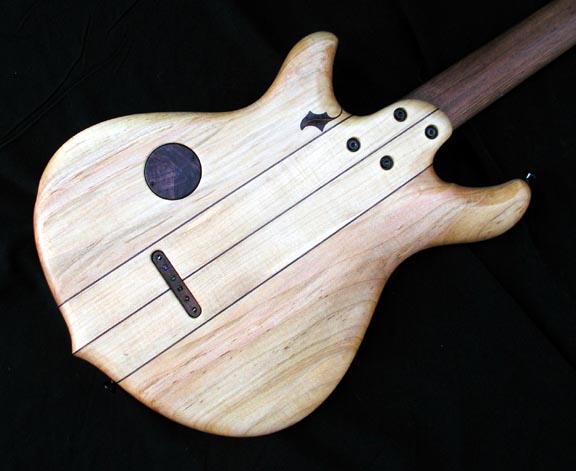
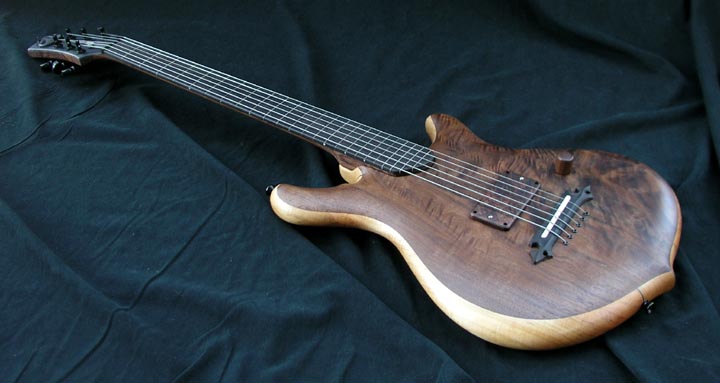
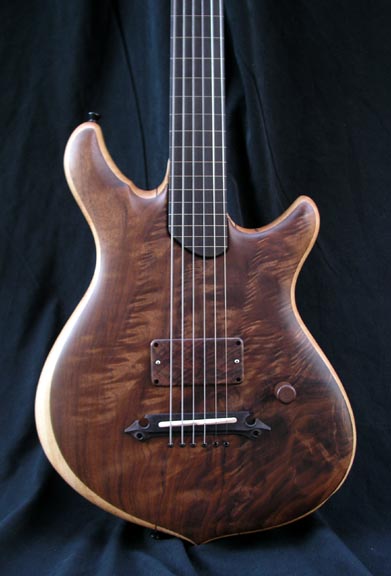
Specifications
Body: semi-hollow soft maple w/ one-piece, air-dried walnut top
Neck: Honduran rosewood, 3x3 headstock, dual-action trussrod, moderate V carve
Fretboard: fretless ebony, 24 frets, 12" radius, maple slot inlays
Scale length: 660 mm (26")
Nut: ebony, 1.70" width
Pickups: single Kent Armstrong humbucker, covered
Switching: volume control only
Bridge: sculpted ebony floating bridge w/hard maple saddle
String spread: 2 3/16"
Tuners: black Grover locking 3x3
Body finish: Danish oil
Neck finish: natural (none)
Total weight: 6 pounds, 6 ounces
I've recorded a simple sound file of this guitar, in CGCFGC tuning. The 26" scale length provides an ample amount of tension for tuning the bottom string down to C. To hear me playing this Kronos, click here.
